Joyous, bold and disruptive, Lightpath Te Ara I Whiti – a cycle bridge that completes the city’s cycle loop – is an exceptional response to a gritty landscape. Monk Mackenzie Architects and LandLAB have produced a dynamic new symbol for Auckland, celebrating the city’s support of alternative transport and the opportunity to create a new public space.
Purple Pin Case Study — Spatial
Monk Mackenzie Architects & LandLAB
#LightPathAKL
Background
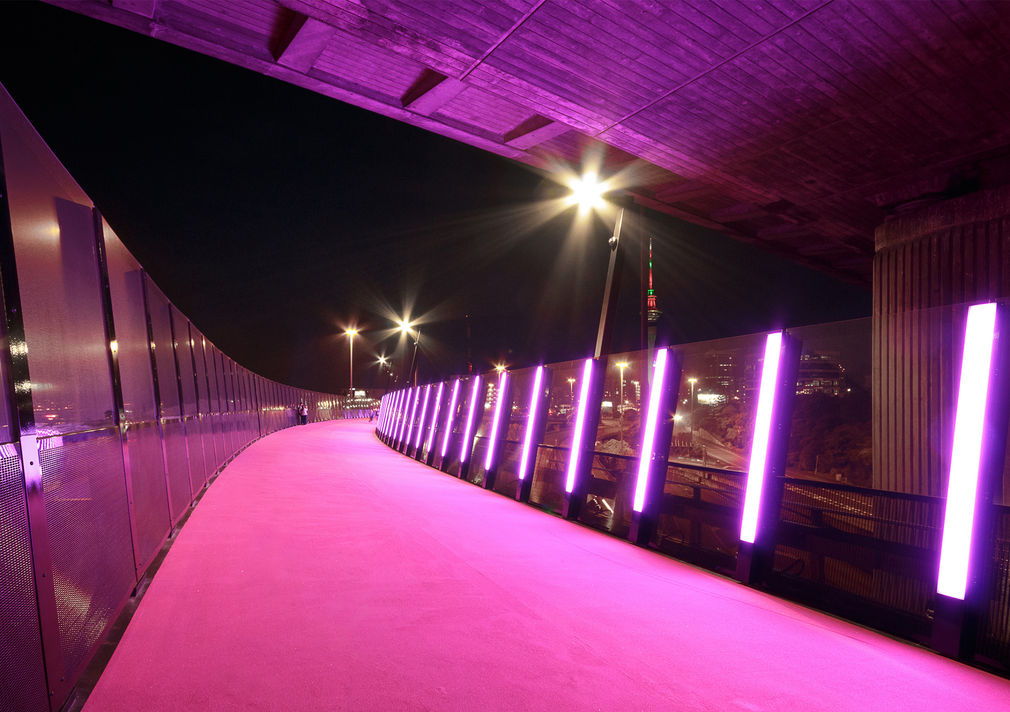
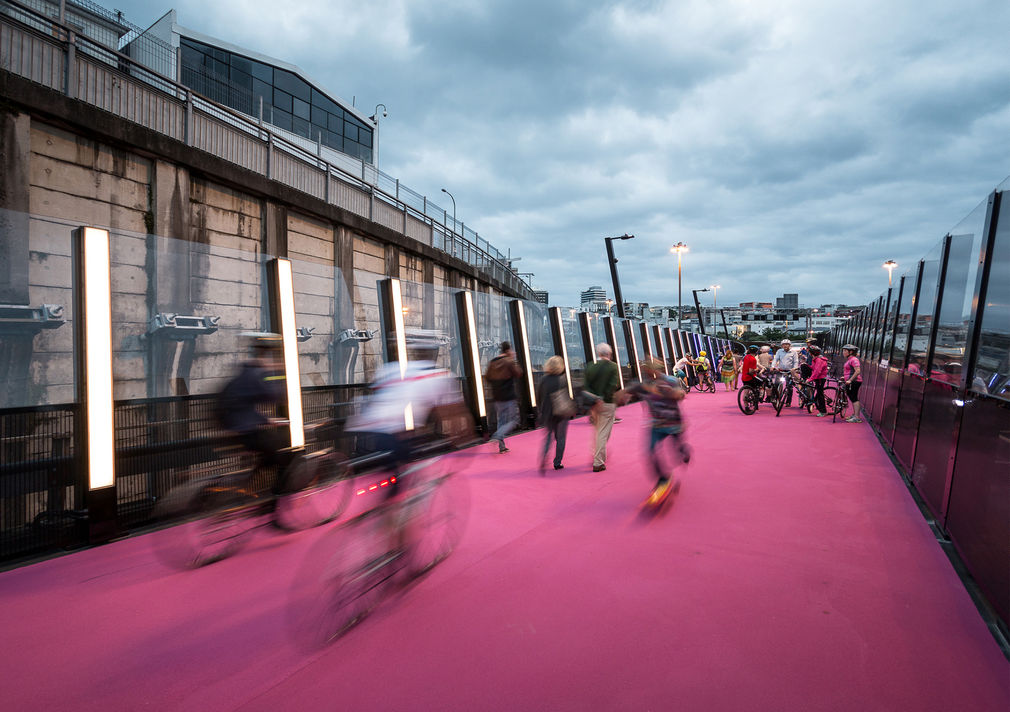

It takes a brave designer to colour a bridge pink. But the architecture, urban and landscape design team knew they had to be bold to make people want to cycle through the midst of Auckland’s spaghetti junction. With 11 motorway lanes above, below or alongside, it’s an intense place, day and night. And the hot pink – as well as referencing the nearby red-light district on K’ Road – makes the bridge stand out as a vivid, attractive, open and active corridor of the city.
The designers have considered the city and individual, the macro and the micro, in a project conceived equally as urban art and urban infrastructure.
The remnant motorway off-ramp was made redundant following the central south-west connection and realignments of 2006. Perfectly in line with Nelson Street – and the proposed (now built) cycle lane down its length – it was soon tagged as part of the city cycle loop. From the top of Nelson Street, it curls south-east and has been extended to alight at Upper Queen Street, after which it connects cyclists and pedestrians to the Grafton Gully cycleway beyond.
But the infrastructure project had to be humanised. While cars may suit flyovers and off-ramps, it required design and craft to make the path attractive to cyclists and pedestrians. So the designers have considered the city and individual, the macro and the micro, in a project conceived equally as urban art and urban infrastructure. Lighting became a focus for the dusk and night-time experience, and critical to the design outcomes. This led to the concept Te Ara I Whiti or Light Path: at once a practical tool, an expression of movement, a beacon for the future of transport, and a delightful part of the cycling experience.
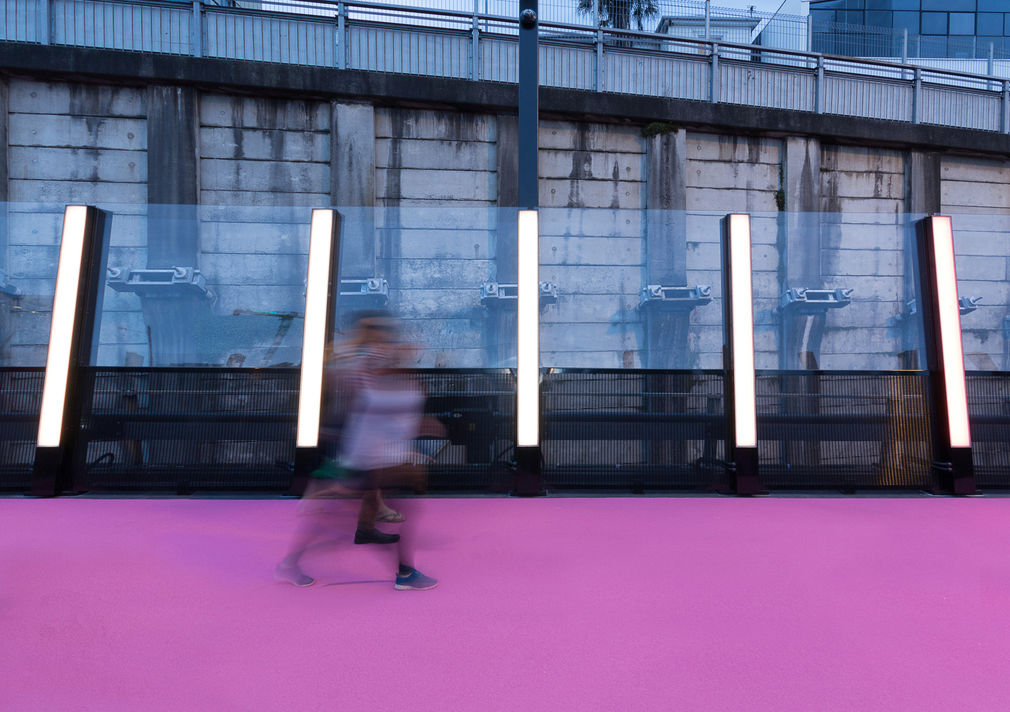
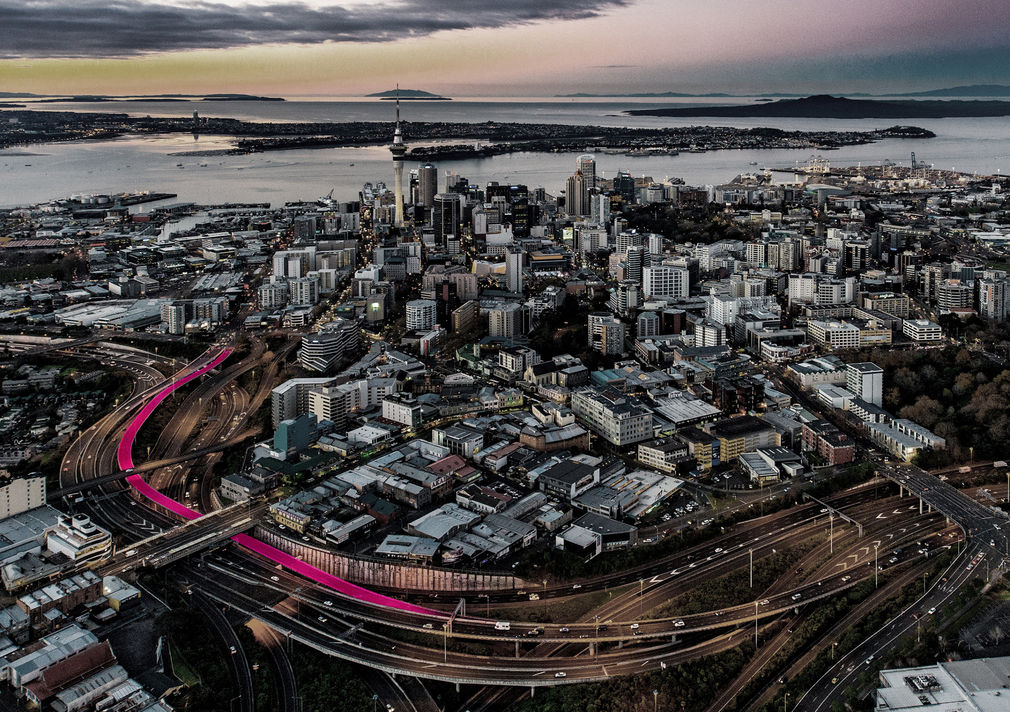

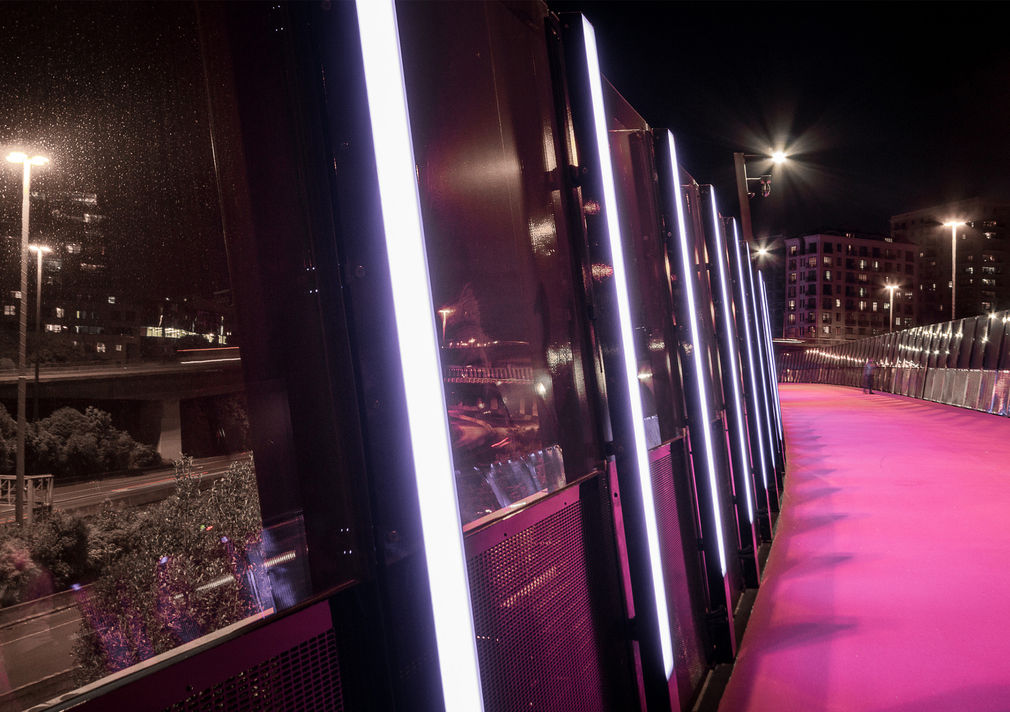
More than 300 LED custom light boxes along the eastern edge of the cycleway create a light spine. As the pink surfacing draws attention by day, the light sculpture and illumination draw even more attention by night. Fully programmable, the light boxes conceal sensors to create a digital infrastructure, enabling an artist to create an infinite array of sequences and patterns. This reinforces the personal experience and creates an interactive sculpture that transforms the new urban space into an event.
Māori artist Katz Maihi formed a crucial part of the team to imbue the contemporary project with a sense of narrative and place. Aluminium plates, engraved with original Katz artworks, are subtly integrated into the western edge of the cycleway barrier. In addition to this, the pink surfacing – made of resin and a coloured aggregate – is concluded at its northern end in another 27-metre-long original artwork that morphs the surfacing back to asphalt.
The project makes such a bold statement on the edge of the CBD that it has been called a new icon for Auckland. It offers social experiences, health, leisure and connectivity. As cyclists hurtle through the highway network, they are immersed in a very memorable environment, taken from one vantage point to another, day or night, and around the adjacent precincts.
“It has changed transport behaviour and engaged with the wider community on many levels,” note the judges. “Lightpath is an incredible addition to the city, being technologically resolved and allowing the user to be totally immersed in the space.”
—Andrea Stevens
www.folio.nz